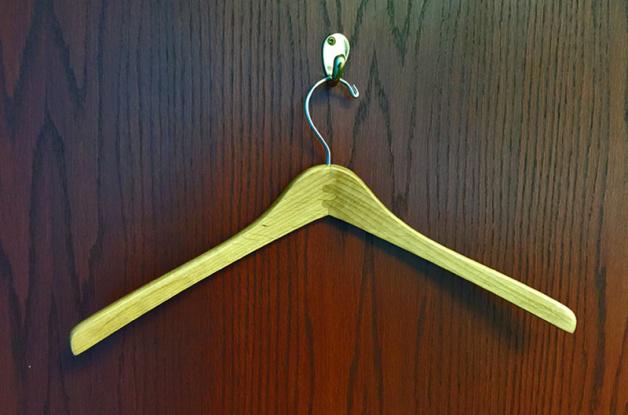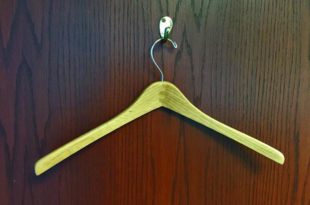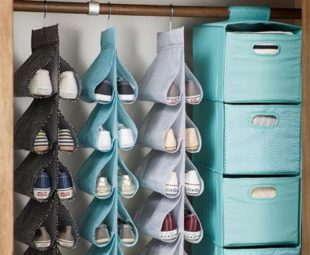 Get Company News
Get Company News
New Hangers! You Spoke, We Listened!
👗New Service Alert – Quinceanera Dress Preservation!
Read tips, tricks, and how-to’s on our Fabric of Life blog.
How-To's

After investing time and money into building a wardrobe, the last thing we want is to see it ruined from using the wrong hangers. It might be hard to believe a tiny hanger could make a difference, but it does! That’s why designers have created such a variety of hangers to choose from these days.
At CD One, similar to many other dry-cleaners, we use wire hangers. For dry cleaners, wire hangers are practical as they are low-cost and available in abundance. They also save a ton of space, which is ideal for businesses like ours where a large volume of clothing is moving in and out. We accept wire hanger donations and encourage reusing and recycling them to play our part in sustaining a healthy environment.
That being said, we do not typically recommend using wire hangers in your home closet.
During the cleaning process, an article of clothing is only on our wire hangers for a short period of time, not long enough to cause any lasting alteration. If you have certain items hanging on them at home for long periods of time though, they can change the clothing’s form. They can also be too weak to support heavier items.
So, how to choose the perfect hanger?
The size, shape, and material of your hangers all play a part in the long-term care of your garments.
Firstly, you want to select hangers that reflect the width of your shoulders. If they are not wide enough or too wide, they will distort the natural shoulder line in your shirts. Also keep in mind that the thicker or bulkier your hanger, the more space they will take up when hanging.
 Contoured Hangers
Contoured HangersThe shape of hanger you chose depends on the type of garment you are hanging, but a well-maintained closet should have a small variety. Large, contoured hangers, like the ones pictured here, work great for heavier items, like suit jackets, or a winter coat. There are varying contoured shapes to choose from; the wood ones work great for the heaviest items.
This is probably the most common hanger in the home closet. They come in pretty much any color imaginable, if you care about being color-coordinated. Button-down shirts can be hung on plastic tubular hangers. The shape holds the shoulders of these shirts in place nicely. They also work great for t-shirts and blouses, and if you get the ones with the little hooks, you can use them for tank tops as well. Look for good quality tubular hangers. A sturdy hanger that doesn’t bend with applied weight. You can also hang light sweaters and knits from these, as long as the weight of them isn’t pulling the garment down.
For hanging knits, blouses, delicates, and anything else that might get that dreaded shoulder stretch from the wrong hanger, we recommend going with padded hangers. They may take up more space in your closet, but the even distribution of weight keeps the shoulders from sagging, creating those unsightly “bumps” on your shirt’s shoulders. Velvet ones work great for keeping the clothes from slipping off the hanger and onto the floor.
There’s a few ways you can tackle hanging your pants, trousers, skirts, etc. The first way is to use a hanger specifically for pants. These usually have clips or a clamp. Pants should be folded (on the crease, if there is one) and then hung by the cuffs. The natural weight from gravity will help keep wrinkles away. Skirts can be hung from these by the waist. Be careful, if you use hangers with tight or metal clips. Delicate material may get imprints from these. You can solve this by using some thin foam or wax paper between your fabric and the clips.
The second option for hanging bottoms is to use a hanger like the one pictured below on the right. Fold and hang pants on the crossbar. This saves more space than using pant hangers, and you can hang a matching top or blazer over it if you like. However depending on the fabric, you may create a crease from the extra fold-over.
These are only a few of our favorite options, but there are plenty to choose from in stores. Remember, the most important things to keep in mind when hanger shopping are, size, shape, and material. If you follow the guidelines we mentioned above, you are on the right path, but don’t forget that a bad hanger can ruin a closet of clothes.
We think you may like
 Get Company News
Get Company News
New Hangers! You Spoke, We Listened!
 Get How-To's
Get How-To's
How To Prepare your Fall Closet for Winter
 Get How-To's
Get How-To's
How to Make Your Laundry Room Functional and Fun